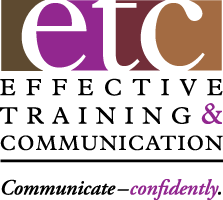We all learned about the three parts of a speech in high school: the introduction, body and conclusion. You remember … ‘Tell ‘em what you’re gonna say, say it and tell ‘em what you said.’ Nothing new here.
Of these three components, the intro is critically important to the success of your presentation and accomplishing your intended outcomes. On average, it’s less than 10% of your total presentation time. So, with a 30-minute presentation, your intro is three minutes or less.
Since the audience is influenced most by what they hear first, a powerful intro can quickly build rapport, establish credibility, stress audience-centric value and let them know what’s coming. That’s a lot of important work to do in a very short time, so every word must count. Here’s a summary of Best Practices for your Power Intro so you can Start Strong.
- State your Main Point as discussed in the last issue. Let the audience know what you’ll be discussing. And ‘discussing’ sounds more interactive and less like lecture than saying ‘ … what I’ll be telling you.’ Remember that your Main Point isn’t your topic or title. It’s a positive, declarative statement. Said another way – it’s your ‘BLUF’… Bottom Line Up Front.
- Also preview your Sub Points – the questions you’ll answer or the content you’ll share in the body that will fully support and establish your Main Point.
- If not already stated, answer the audience’s question ‘What’s In It For Me?’ – the value proposition of your message. A subtle connection makes the audience work too hard to connect the dots. So, connect the dots for them.
- Establish your credentials by answering their questions ‘Who are you and why should we listen to you?’ If they already know you, no need to remind them what they already know. If someone else is introducing you, make sure that intro is brief but answers those two questions.
- When in doubt or speaking to a mixed audience, briefly intro yourself. But, avoid the trite phrase ‘For those of you who don’t know me … ‘. If your name and title are on the opening PowerPoint slide, you can start your engaging comments first, then intro yourself.
- Indicate when the audience can ask questions – either at the end or any time they want. Even if you ask them to hold questions until the end, that won’t keep some people from jumping in whenever they want. So, be prepared to deal with them.
- Reference your handout if you have one. If you’ve already passed it out, indicate that they’ll need to refer to it during the presentation. If they don’t need it now, why did you give it to them? If you have a handout for them afterwards, indicate what it will include so they don’t need to take as many notes.
- You may also need to mention some Process Details. I don’t like the term ‘housekeeping’ – sounds like you’re about to make their bed. Better for someone else to tell the audience about safety procedures, breaks, restrooms, technology off, etc., so you don’t take away from your limited intro time with trivia.
- If is isn’t painfully obvious by now, humor – especially jokes – can create a negative impression on your audience, especially in your intro. Saying something potentially offensive is bad enough, but saying something not funny is even worse. If you never try to be funny, they’ll never know or care if you can be. If you try and fail, they’ll all know you can’t be funny.
- Natural humor can work in your introduction, but err on the side of being conservative unless you have a high tolerance for risk. There are enough effective strategies for audience engagement and attention without the downside risks of failed humor. Enough said.
- Now, you can move to your first Sub Point with a simple transition statement and the opportunity to restate your Main Point.
Wheeww … your Power Intro has a lot of important work to do in a very short time. Properly done, the audience will know what they’re going to hear, why it’s important to them and why they should believe – and even like – you. Often, you can ‘close the sale’ by the end of your intro. What follows it only reinforces the conclusion the audience made in the first few minutes. So, grab them immediately with a Strong Start and win the day with a Power Intro.

Hi there mates, its great piece of writing regarding teaching and
fully explained. Keep it up all the time.
Sandy … thanks for your positive comments and keep reading and engaging … Phil Stella
I enjoy reading all of your articles and wanted to write a little comment to support you.
Thanks for your positive comment and support. Keep on being an engaged reader! Regards … Phil
I enjoy the info you provide here … amazing blog!
Thanks a lot … I like amazing!
Excellent article. I definitely love this website. Keep writing!